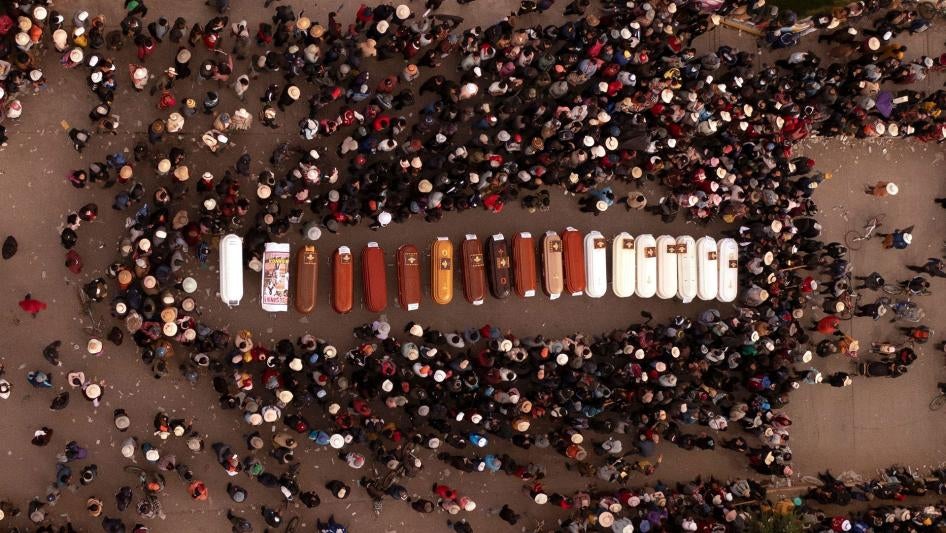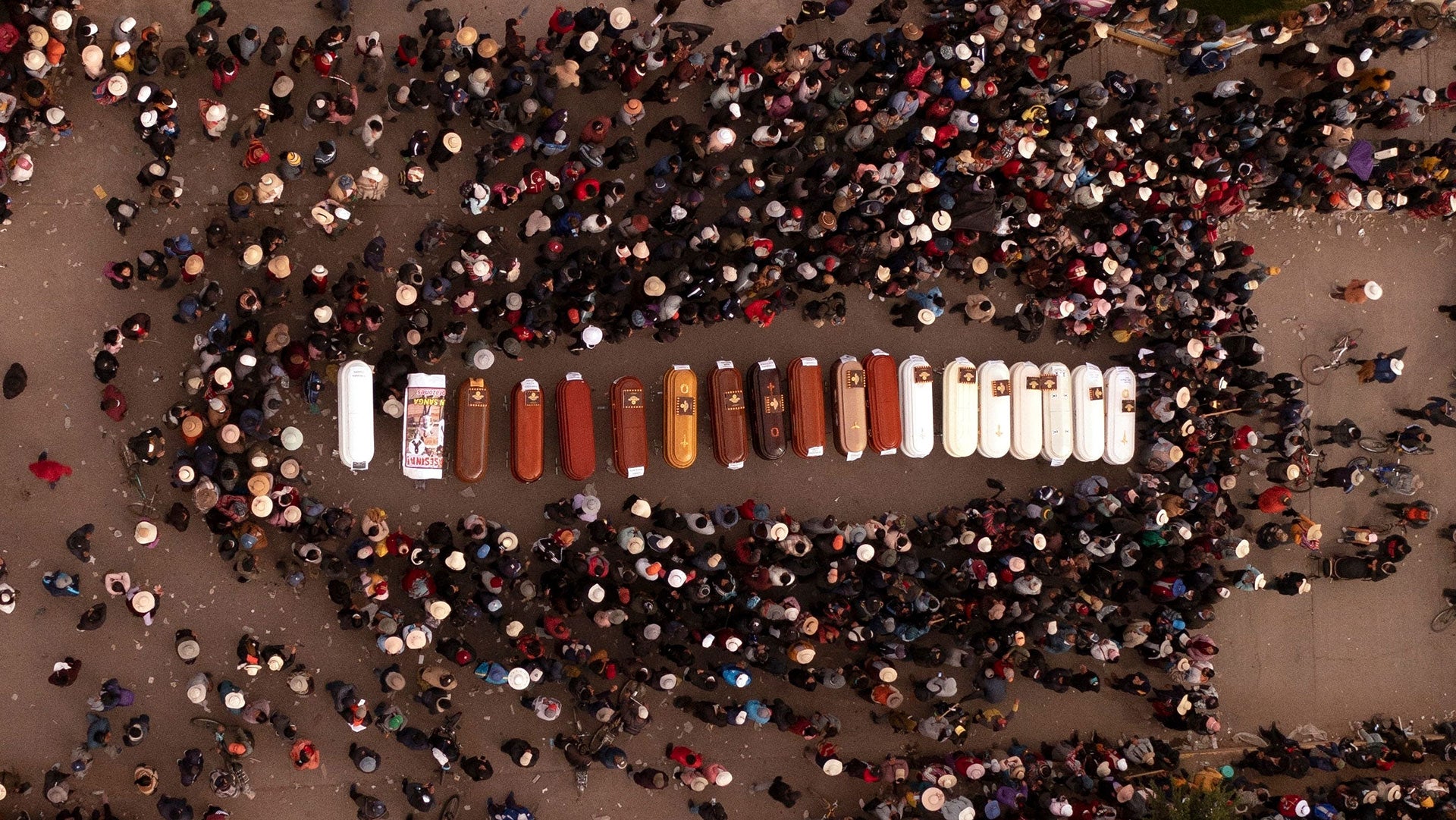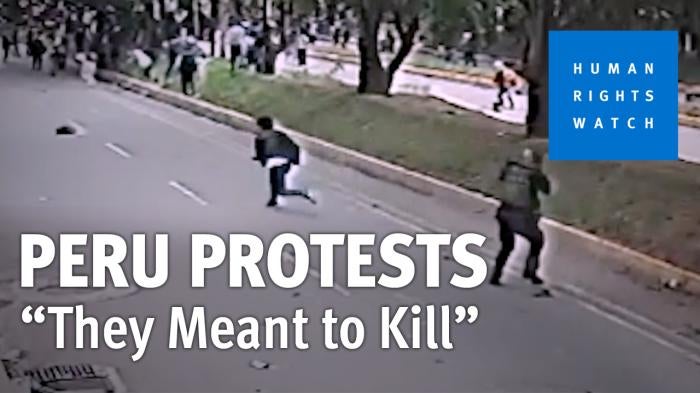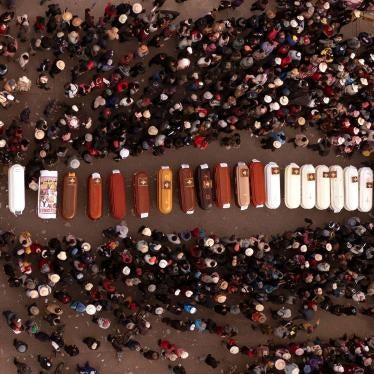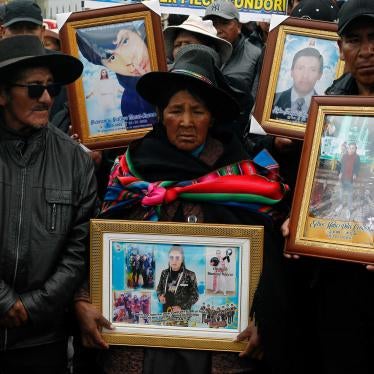(São Paulo) – Peru’s security forces used disproportionate and indiscriminate force in the city of Juliaca on January 9, 2023, the single deadliest day of repression of recent protests, Human Rights Watch said in a multimedia report released today. Eighteen protesters and bystanders were killed.
The report, “They, the Policemen, Killed My Brother,” reconstructs the events of that day, refuting official accounts provided to the Inter-American Commission on Human Rights and in public statements.
Some protesters hurled rocks, fired homemade fireworks at security forces, and entered the tarmac of Juliaca’s airport, actions that can appropriately be investigated and prosecuted. But extensive evidence shows the response by police and the military to those acts of violence was disproportionate, in violation of Peruvian and international law.
“The Peruvian government insists on telling an official version of events in Juliaca that the evidence contradicts,” said César Muñoz, associate Americas director at Human Rights Watch. “Instead of trying to minimize or discredit the mounting evidence of abuses, President Dina Boluarte should acknowledge the grave human rights violations in Juliaca and elsewhere in Peru, pledge to ensure accountability and reparation and health care support for victims, and take immediate measures to prevent those abuses from happening again.”
Human Rights Watch interviewed 26 witnesses, lawyers, prosecutors, and family members of victims in Juliaca and analyzed more than 500 photographs and 10 hours of video footage posted to social media, as well as autopsy and ballistics reports and the criminal file of the Prosecutor’s Office investigation into killings and injuries there. The multimedia report provides additional evidence and details of abuses in Juliaca that complement the findings in an April 26 Human Rights Watch report.
Human Rights Watch confirmed that 15 of the 18 civilian victims died from wounds caused by gunfire. The three others died from pellets fired by shotguns of the type used by police.
A total of 49 protesters and bystanders died in the context of the police and military response to demonstrations across Peru from December 2022 through February 2023, according to the country’s Ombudsperson’s Office. Most protesters were rural workers and Indigenous people in the southern part of the country who called for early elections after a failed coup by then-President Pedro Castillo, among other political demands. They were also driven to the streets by frustration stemming from inequality and marginalization.
More than 1,200 people were injured across the country, including hundreds of police. A police officer was killed in unclear circumstances at a location over three kilometers from the site of the main protests in Juliaca on January 9. Prosecutors have charged a former police officer and another man with the killing.
On May 3, the Inter-American Commission on Human Rights (IACHR) released a report that concluded that security forces used excessive force in response to protests and that some of the killings could amount to extrajudicial executions.
Regarding the events in Juliaca, Peruvian officials told the IACHR that security forces remained within the airport perimeter “at all times” and that nobody died within the airport “or around its external perimeter.” Those officials also said that the cause of the deaths was not excessive use of force because the deaths occurred “outside of that perimeter, even in places or streets far away from the airport where there was no presence of security forces that day.”
Yet the evidence Human Rights Watch obtained establishes that both these claims are false. Nelson Huber Pilco, 22, was shot roughly 12 meters inside the airport’s eastern fence at around 4 p.m. He later died of his wounds. Video shows him on the ground within the airport fence while another protester waves for help.
A video and a photograph that Human Rights Watch verified show police armed with shotguns exiting the east fence of the airport at around 12:30 p.m. Seventeen photographs show scores of police officers at an intersection just south of the airport fences near where several people were shot and killed, including Marco Antonio Samillán, 30, a medical student who was shot dead at around 4:10 p.m. as he was providing first aid to a young man.
A video also shows police officers wielding Kalashnikov-pattern assault rifles and firing shotguns in an area roughly 1.8 kilometers from the airport after 8 p.m. At least four people were killed in that area at that time.
The government has also tried to divert responsibility from security forces in its public statements about Juliaca. On the day of the events, Prime Minister Alberto Otárola said that the killings were “the direct responsibility of those who want to carry out a coup d’état” and Defense Minister Jorge Chávez claimed that protesters used firearms. On January 24, two weeks after the events, President Boluarte said that “it was not the police who were shooting,” that the killings did not occur where police were deployed at the airport, and that the “majority” of those who died were killed by homemade weapons. She suggested that firearms and ammunition entering Peru from Bolivia may be causing the deaths of protesters.
The government has not provided any evidence to back up these assertions.
Human Rights Watch did not identify any image of protesters carrying firearms in Juliaca or elsewhere in Peru. Peru’s then police chief told Human Rights Watch in early February that they had not seized any firearms from protesters in Juliaca, or in protests elsewhere in the country.
Autopsy and ballistics reports show that the bullets and pellets recovered from the bodies of the victims in Juliaca are fired by the same models of assault rifles, handguns, and shotguns seen carried by police and military officers that day.
The government should invite an independent commission of international experts to support ongoing investigations and draft a report on the structural factors that led to the current political and social crisis, and to the human rights violations, Human Rights Watch said. It should also take concrete actions to regain public trust and pave the way for dialogue with protesters and affected communities, and work with Congress to secure long-needed police reform to make the police force more efficient and respectful of the law. Prosecutors should conduct prompt, thorough, and independent investigations into the police abuses in Juliaca, going up the chain of command and including civilian authorities, to ensure that those responsible are held to account.
“Peruvians need answers about what happened in Juliaca that go beyond criminal responsibility,” Muñoz said. “The government should invite a group of independent international experts that can report on the causes of the current crisis and present recommendations to strengthen the rule of law and the protection of human rights in Peru.”
